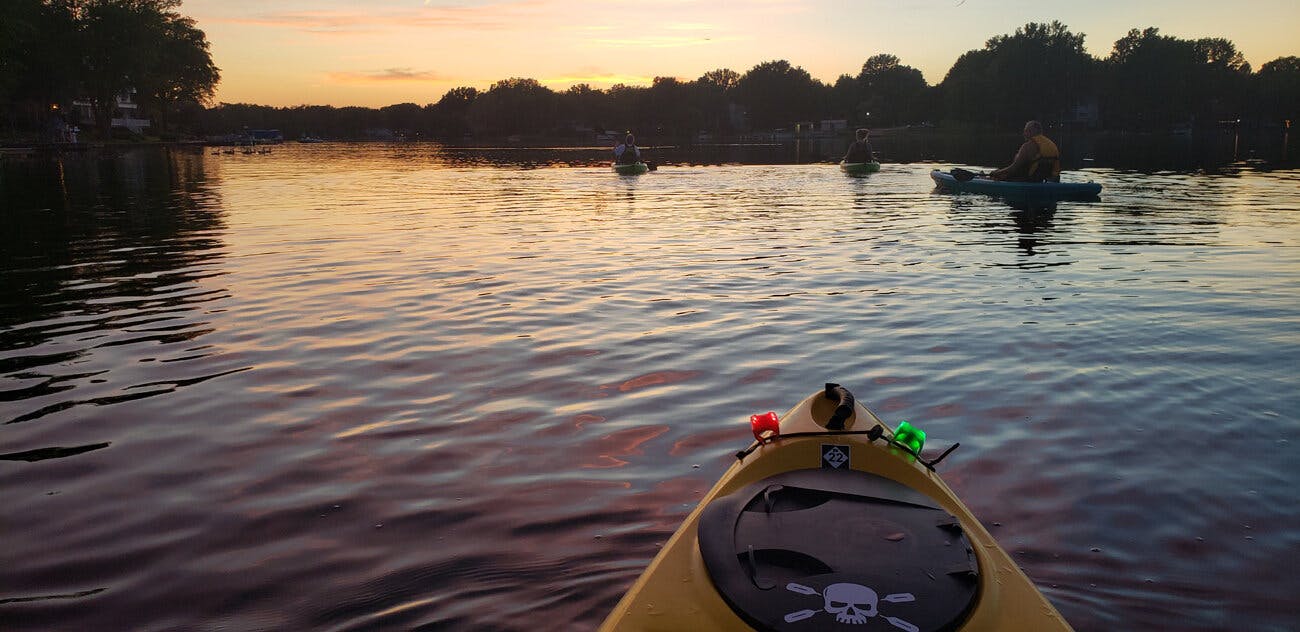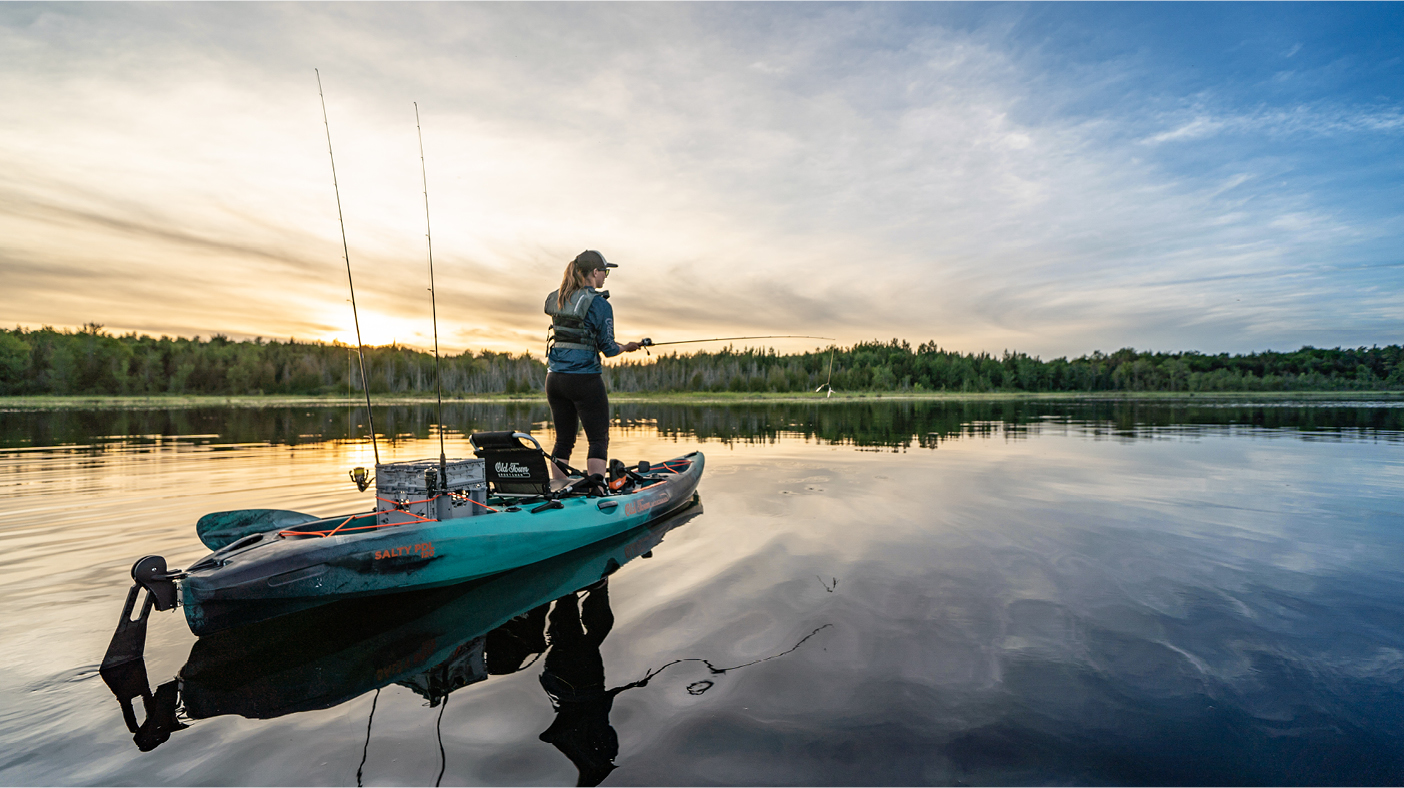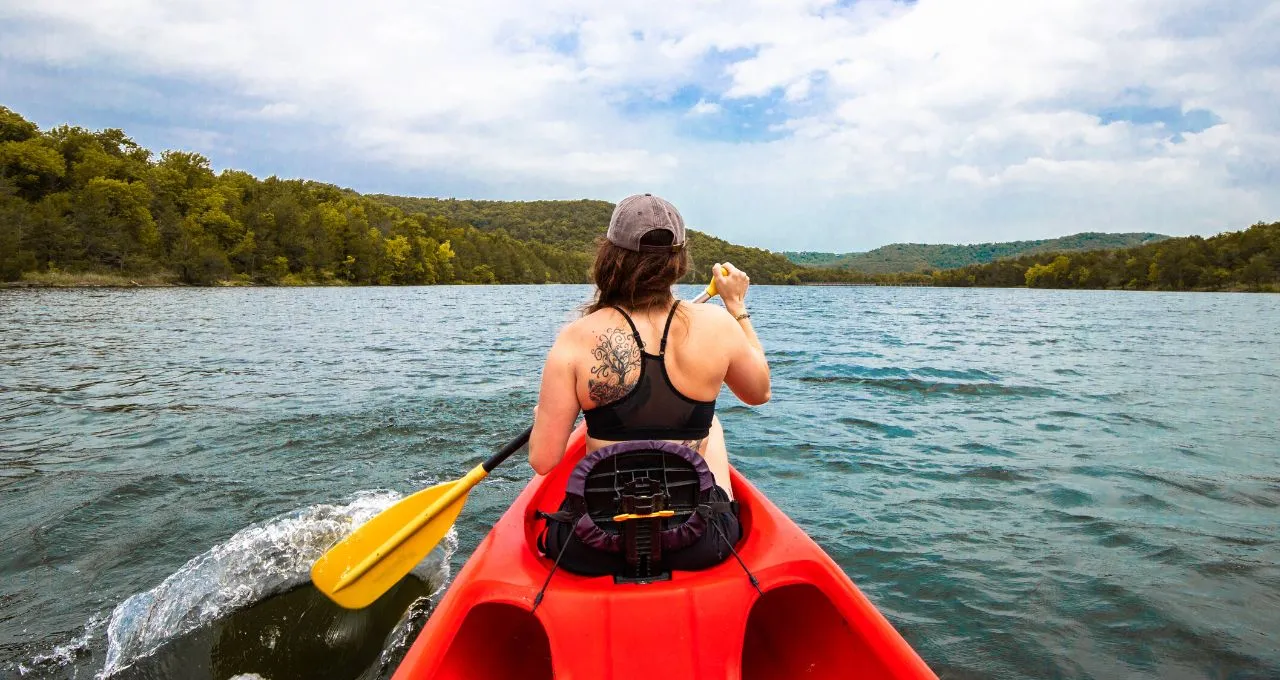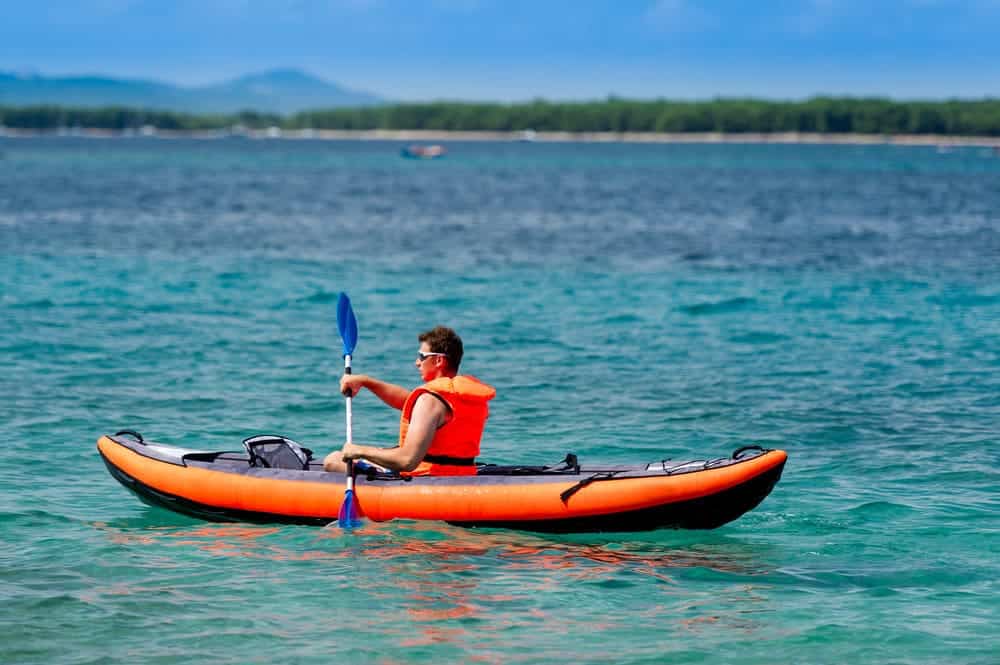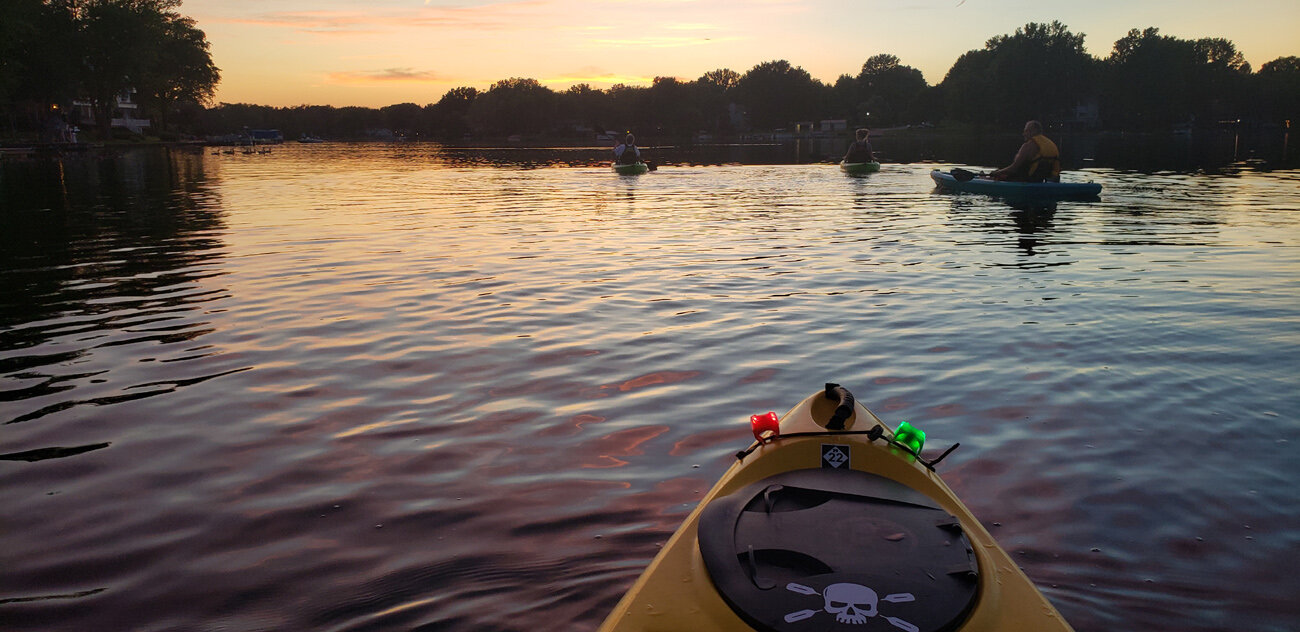
- Alabama
- Alaska
- Arizona
- Arkansas
- California
- Colorado
- Connecticut
- Delaware
- Florida
- Georgia
- Hawaii
- Idaho
- Illinois
- Indiana
- Iowa
- Kansas
- Kentucky
- Louisiana
- Maine
- Maryland
- Massachusetts
- Michigan
- Minnesota
- Mississippi
- Missouri
- Montana
- Nebraska
- Nevada
- New Hampshire
- New Jersey
- New Mexico
- New York
- North Carolina
- North Dakota
- Ohio
- Oklahoma
- Oregon
- Pennsylvania
- Rhode Island
- South Carolina
- South Dakota
- Tennessee
- Texas
- Utah
- Vermont
- Virginia
- Washington
- West Virginia
- Wisconsin
- Wyoming
Get Your Paddle On A Guide to Flatwater Kayaking 2025
kayaking destinations
Do you remember the first time you heard someone mention they enjoyed "flatwater kayaking" and weren't quite sure what they meant? You'll know exactly what they mean by the end of this post, which covers one of the main types of kayaking.
How does flatwater kayaking work? Kayaking on flatwater occurs on bodies of water protected from waves, excessive wind, and currents. It usually occurs on quiet bodies of water, such as marshes and swamps, as well as small lakes and ponds. Flatwater kayaking is an excellent choice for beginners since there are fewer obstacles.
Flatwater kayaking may sound intuitively familiar to you if you're like me. Ah, so it's on flat water? It's that simple. That's right. You'll find everything you need about flatwater kayaking in this post.
Getting Started with Flatwater Kayaking
Flatwater kayaking is an excellent option if you're looking to dip your toes into kayaking for the first time. It's affordable, easy to learn, and a great way to spend a day.
Kayaking Types: What Are They?
It's helpful to take a few minutes to understand how flatwater kayaking fits into the world of kayaking before getting into the nitty-gritty details. Whitewater kayaking and flatwater kayaking are the two main types of kayaking, although there aren't necessarily formal definitions.
In contrast to kayaking, flatwater kayaking involves navigating a tranquil body of water with a kayak. A small lake, pond, marsh, or swamp typically experiences this. Despite their unique challenges, these bodies of water rarely present a person with external forces that can affect their kayak's direction or stability.
In contrast, whitewater kayaking involves navigating a body of water that does not fall into the flatwater category. There are a wide variety of bodies of water where this can occur, and it tends to be a much broader category. While paddling a small river or sea differs significantly from kayaking on the sea or ocean, both fall under whitewater kayaking.
What You Need to Get Started Flatwater Kayaking
Nothing is better than getting on the water after finding an excellent flatwater kayaking location. Do you need any special equipment or gear? The following are some of them:
An inflatable kayak or a hardshell kayak
Paddle for kayaks
(Usually a life jacket) Some personal flotation device
Even though choosing the right kayak, PFD, and kayak paddle seems simple, millions of words have been written about it. It's a good idea not to get too involved in the details of kayaking if you're just getting started. Don't forget to have each one. The PFD is included as well. We have been the cool kid once or twice, thinking, "Life jacket?" No problem. Wear The PFD.
Where You Can Go Flatwater Kayaking
The best place to start flatwater kayaking is usually a small to the medium-sized lake. The shorelines of these lakes are typically densely forested, which makes them excellent windbreaks. As you may have noticed, getting away from the shore increases your chances of running into higher gusts of wind. A paddler will encounter wind no matter where they are on a lake, but sustained winds on larger lakes will exhaust them more quickly and present additional challenges. Kayaking is best learned on small lakes (less than a few hundred acres in size) if you're inexperienced.
There are several great flatwater kayaking options in marshes and swamps, but they are generally less popular and harder to navigate. The launch points may be harder to find since they are less popular. Rental shops with access to swamps and marshes may be challenging if you don't own a kayak. Much depends on the bodies of water around your location, with places like the Everglades offering easy access to kayak rentals. Getting close to an undervalued ecosystem is one of the best things about kayaking a swamp or marsh. There is never a way to predict what you'll encounter!
How to Get Started Flatwater Kayaking
To begin flatwater kayaking, there are two easy steps to follow.
Rent a kayak and paddle around a nearby lake.
A small or medium-sized lake is the best place to start flatwater kayaking. You can rent a kayak for a reasonable price and get first-hand experience on the water without having to spend hundreds of dollars or figure out how to store your new 12-foot kayak.
Most kayak rentals charge by the hour, and full-day rentals often offer a discount. Starting flatwater kayaking for an hour is a good option if you're just getting started, but you might want to extend it if you're enjoying it. Generally, it is best to build your strength slowly since kayaking works specific muscles.
Do You Need a Specific Kind of Kayak for Flatwater Kayaking?
It depends on the situation. Recreational kayaks are the most common kayaks used by people who get into flatwater kayaking. In addition to sit-on-top kayaks, there are also sit-inside kayaks that are aptly named.
Don't worry too much about the kayak you choose if you're just getting started with kayaking and won't spend much time on the water. You're best off renting a kayak or borrowing one from a friend, as what they have will probably be more than sufficient for your needs. If you enjoy flatwater kayaking and want to get your kayak, you can always build on your previous knowledge.
When you decide to plunge into kayak ownership, working with a local kayak shop is likely the best option, especially if you plan on using your kayak regularly. If you're lucky, they might even let you test a few kayaks on the water, and they'll be able to show you the wide variety of options available.
Get a spare kayak from a friend.
Do you have a friend who posts neat pictures of themselves kayaking on a lake? Those outdoorsy types who love granola and remind you of Subaru commercials? See if they can help you get on the water by contacting them. Almost everyone in the kayaking community enjoys assisting beginners and would happily share their knowledge.
Paddlers remember the confusion of kayaking as beginners, and many might even have an extra kayak available for loan.
Frequently Asked Questions
What is flatwater kayaking?
Flatwater kayaking refers to the recreational activity of kayaking on calm, smooth waters, such as lakes, rivers, and bays.
What type of kayak is used for flatwater kayaking?
Flatwater kayaks are typically long and narrow, with a sleek design that allows for efficient and stable movement on calm water.
What is the difference between flatwater kayaking and whitewater kayaking?
Flatwater kayaking is a slower-paced, more relaxed form of kayaking, in contrast to the more adrenaline-fueled whitewater kayaking.
What is the skill level required for flatwater kayaking?
Flatwater kayaking can be enjoyed by people of all skill levels, from beginners to experienced kayakers.
Are there any safety concerns for flatwater kayaking?
There are some safety considerations for flatwater kayaking, such as always wearing a life jacket and checking the weather conditions before heading out on the water.
Can flatwater kayaking be done alone or with a group?
Flatwater kayaking can be done alone or with a group, depending on the individual's preference.
